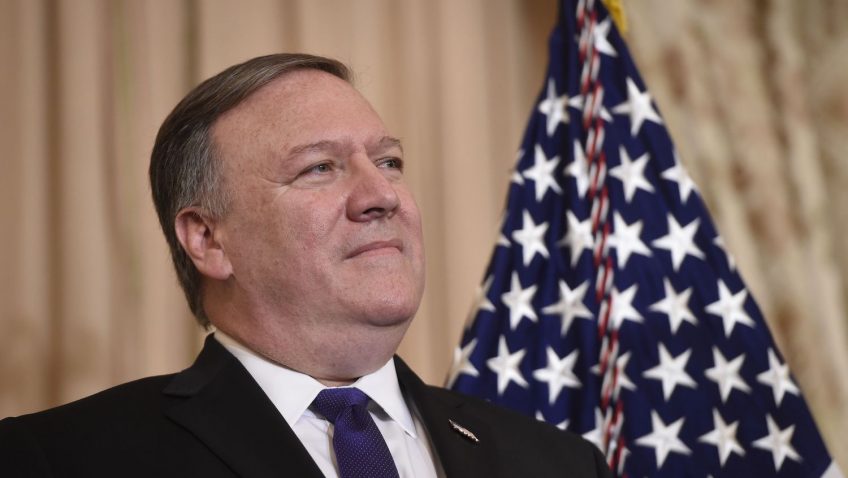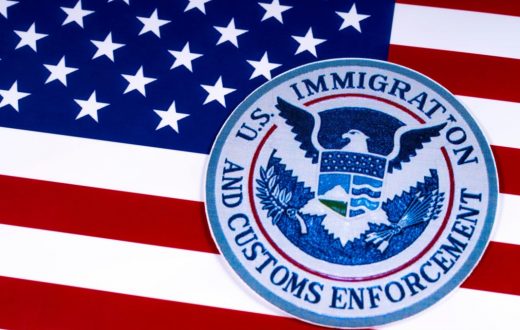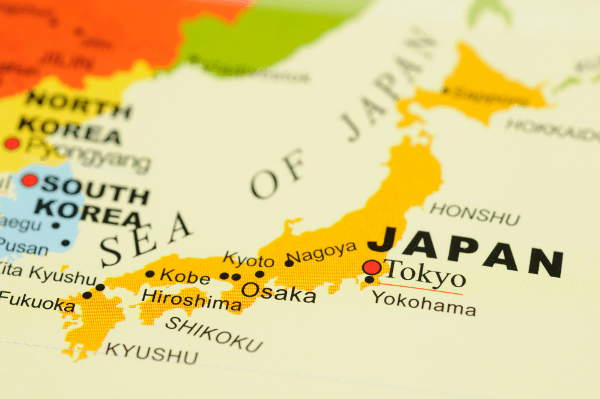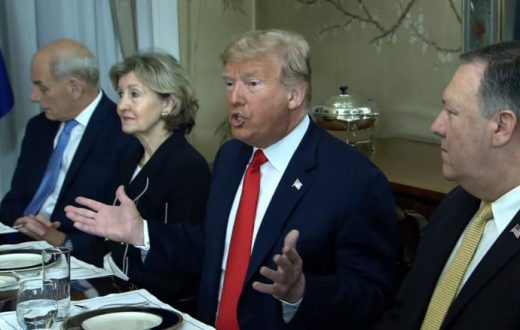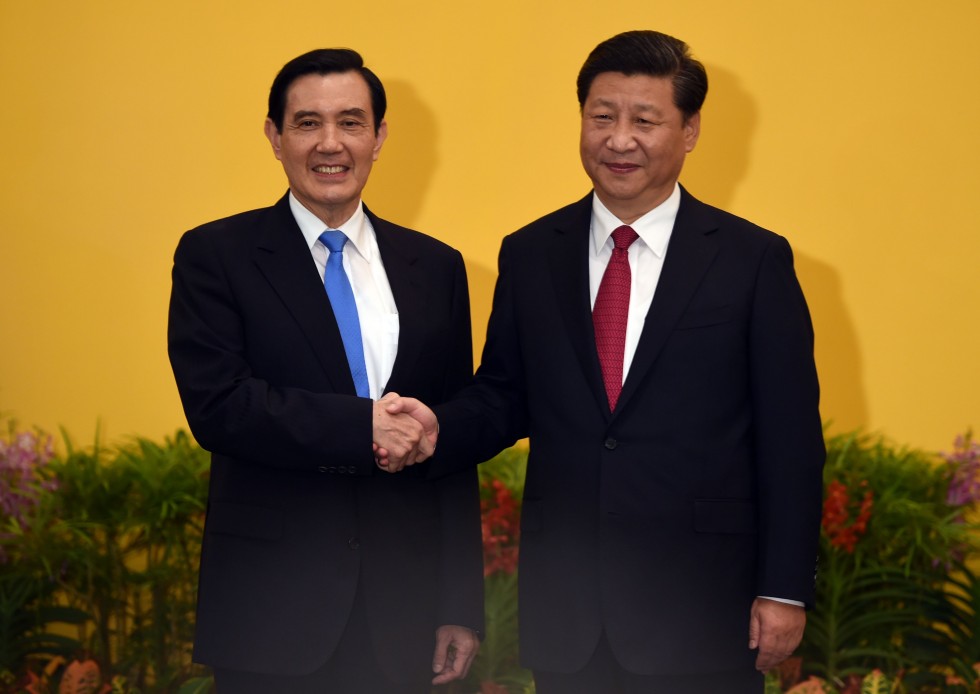The American fiasco in the Middle East, coupled with the bequeathed legacy of Trump’s era, is posing tremendous challenges to the new American administration. Though the latest Russian invasion of Ukraine and the ongoing horrendous chaos in the global economy are distracting Washington from China, the Biden’s administration so-called “Indo-Pacific” strategy entails that Asia remains a top priority to Washington. In one of his latest works titled “Destined for War”, Graham Allison examines whether China and the US are heading towards a prolonged war. Although the recent lockdowns in China are presenting challenges to it is goals of taking over the US as the biggest economy in 2030, Beijing’s military activities in South China continue to puzzle the Biden’s administration.
Geopolitically speaking, the rise of China has prompted US policy makers to alter their prolonged “Asia-Pacific” strategy to deal with the so-called Chinese threat .Coupled with the formation of trilateral security alliances, including the AUKUS, the so-called “Indo-Pacific” strategy aimed at thwarting Beijing’s growing influence from the Western Pacific to the Indian Ocean. The released document says explicitly that Washington is expected to focus on “every corner” of the region. Yet, despite this, the so-called “Indo-Pacific” strategy is not confined to containing China only; it aims to develop a new security architecture in Asia as well.
The concept of “free and open” Indo-Pacific, therefore, offers an ideological and political justification for the American deployment in the region. It is an ideological and political construct that aims at preventing the rise of China, while securing the American interests in the “imagined” region. Last Month, Kurt Campbell, the U.S. National Security Council coordinator for the “Indo-Pacific”, said that America is more likely to witness a strategic surprise in the Pacific region. In addition to that, the latest security pact between China and Solomon Islands has provided American and Australian policy makers with the opportunity to further securitize the region.
The aim of this paper, however, is not to examine China’s actions and policies, but to assess the applicability of the post-structuralism approach in the case of the Indo-Pacific. In other words, the aim of the paper is to examine how the “Indo-Pacific” was imagined and constructed through political discourse.
Instead of dealing with the region as naturally given, the paper questions the “naturalness” of the region. Since Post-Structuralism and critical geopolitics are interested in studying the relationship between geographical knowledge and power, it has become increasingly necessary to study how the so-called “Indo-Pacific” region is developed.
To achieve this goal, the paper relies on critical geopolitics approach to examine how the region was “imagined” and securitized. Hence, the paper argues that the “Indo-Pacific” region is an outcome of political construction and imagination to build new (American) security architecture in Asia.
Knowledge-Power Nexus
Although Post-Structuralism is an approach that is originally developed in sociology and literature, it is still widely utilized in studying international relations, especially by scholars of the critical school in IR. Though it does not provide it is readers with a “world view”, post-structuralism remains an important tool of analysis in IR. Critical Geopolitics as a strand in Post Structuralism, questions geographical assumptions and how they are dealt with, especially within policy circles.
The so-called concept of “Indo-Pacific” is widely used in many countries of the region, including Japan and Australia. Though the focus of the paper is on American imagination of the Indo-Pacific, it is important to, at least, note that countries in Asia have interests as well in developing biased knowledge of geography.
Although the term “Indo-Pacific” was not explicitly used, until very recently, maritime strategists, such a Gurpreet S. Khurana in India, criticized the strategy of the “Asia- Pacific” for ignoring the growing importance of involving India into a new strategy that aimed at containing China. According to Khurana, East Asia and New Delhi should enhance their political and economic alliances across the “Indo-Pacific”.
Likewise, Shinzo Abe, the Japanese Prime Minster, gave a speech before the Indian parliament in August 2007, arguing for the growing importance of enhancing relations between the Asia Pacific and South Asian regions. Though he did not explicitly use the term of “Indo-Pacific”, it was clear that there was a general urge to alter Washington’s policy regarding the containment of China.
President Biden perceives the so-called Chinese threat as a factor that endangers the “democratic” and “liberal” Indo-Pacific order. Hence, by portraying the struggle between China and the US as a prolonged struggle between democracy and authoritarianism fits the assumption of Post-Structuralism in IR. According to this school of thought, politics in IR is treated as black or white. The securitization and political imagination of the Indo-Pacific, therefore, are outcomes of this binary division and subjectivity.
Issue of Representation:
Based on the current literature, there are two reasons why the political construction of the so-called “Indo-Pacific” region seemed a plausible option for the Biden administration. Firstly, the American administration realized the horrendous military and political activities of Beijing from the Western Pacific to the India Ocean. Secondly, the Biden administration realized the tremendous importance of incorporating India into the new security architecture. This explains why India is incorporated into the Quadrilateral Dialogue (QUAD), which is formed to establish New Delhi as the new “security provider” in the region.
Although New Delhi’s imagination of the region is an extension of it is “Look East Policy”, India’s strategy is more cautious than Australia and Japan. Though it is part of the “QUAD”, it has been unable to determine whether it is imagination of the Indo-Pacific is aimed at excluding China. Nonetheless, the political imagination of all the “Indo-Pacific” in the Indian, American, and Australian circles entails that world maps are adjusted to fit strategic concerns of the respective time.
Hence, it has become clear that “mental maps” are all about power relations; it is the language of the “powerful”. The so-called “Indo-Pacific”, which is an outcome of political construction, aims to privilege certain nations, including Australia, Japan, and India, over the others. Therefore, it seems that we cannot have a permanent or balanced understanding of the world. In other words, policy makers asses the growing threats in a specific area and they employ the suitable strategy, which includes securitizing the “imagined” region in order to serve their strategic interests.
In one of his latest statements, Antony Blinken, US Secretary of State, said that the so-called “Indo-Pacific” is expected to shape the “trajectory” of the world in the 21st century. During his speech in Jakarta, Indonesia, Blinken said that Washington will adopt a strategy of “deterrence” to promote “peace” and ‘“stability” in the Indo-Pacific, arguing that threats are evolving dramatically in the (imagined) region.
During her latest visit to Singapore, Kamala Harris kept warning her counterparts of the Chinese “incursion” in the region, arguing that Beijing’s policies are intimidating. Again, she repeated the word “free and open” Indo-Pacific, stressing on the importance of enhancing relations with Washington’s allies to defend the “imagined” region. It has become clear; therefore, that Biden’s so-called “Indo-Pacific” strategy is a continuation of Donald Trump’s designation of China as a foe.
According to South China Morning Post, a journal based in Hong Kong, White House officials started using the term of “Indo-Pacific” during Trump’s presidency. It was an attempt to distance the Trump administration from Obama’s “Pivot to Asia”. Biden’s decision to officially use the concept, therefore, entails that the term is becoming the new “normal” in Washington’s approach towards the “imagined” region.
Yet, Biden’s strategy differs in the sense that it puts emphasis on “integrated deterrence”, and instead of constraining economic relations with the region like Trump did when he left the Trans-Pacific Partnership, Biden initiated an economic Indo-Pacific framework. Though the new strategy prompted fierce debate in Chinese policy makers, it is still adopted by the US, Australia, Japan, among others.
In his article “Maritime politics as discourse in the Indo-Pacific”, Tim Summers, an Assistant Professor and Research Fellow at Chatham House, argues that China has always been placed at the center of the geopolitical discourse within the American policy circles. He says that the Chinese threat itself is part of the evolving the geopolitical discourse in Washington.
Besides, Summers (2021) believes that maritime space, politics, and boundaries are parts of the geopolitical discourse in Asia. Therefore, Summers argues that geopolitics is material and ideological at the same time; it is a process through which knowledge is produced and internalized. By analyzing the map of the South China Sea adopted by the West, one can easily find an orientalist and biased representation of China in this area. The usage of pink or red colors in areas that are witnessing Beijing’s rise provides a virtual representation of China as a penetrator of the Sea area.
To conclude, there is a limited literature written on the political imagination and construction of the Indo-Pacific. Yet, it has become increasingly necessary to study this “imagined” region, especially in times when the US is shifting it is attention towards China. In contrary to the prevailing analysis, the Russian invasion of Ukraine is less likely to distract the Biden’s administration from China’s activities in the Indo-Pacific. In the midst of political chaos in the US, China is initiating security pact with Solomon Island to ramp up it is influence in the imagined region.
The paper tried to apply post-structuralism and critical geopolitics on the case of the Indo-Pacific, with a special focus on issues of false representations, subjectivity, and binary divisions. Yet, given the limited literature, the author of the paper advice future scholars to thoroughly examine the written and spoken statements in the US regarding the Indo-Pacific. Analysts are not exaggerating the threats of War; it might happen in the not-too-distant future. The fact that countries like Australia are allying with the US, says a lot about the growing polarization in the so-called Indo-Pacific. Analysts are not exaggerating the threats of war when they say that China is more likely to kick Washington out of the South China sea; it might happen in the not-too-distant future
“Indo-Pacific” Region: When Power and Knowledge Intersect
The American fiasco in the Middle East, coupled with the bequeathed legacy of Trump’s era, is posing tremendous challenges to the new American administration. Though the latest Russian invasion of Ukraine and the ongoing horrendous chaos in the global economy are distracting Washington from China, the Biden’s administration so-called “Indo-Pacific” strategy entails that Asia remains […]

